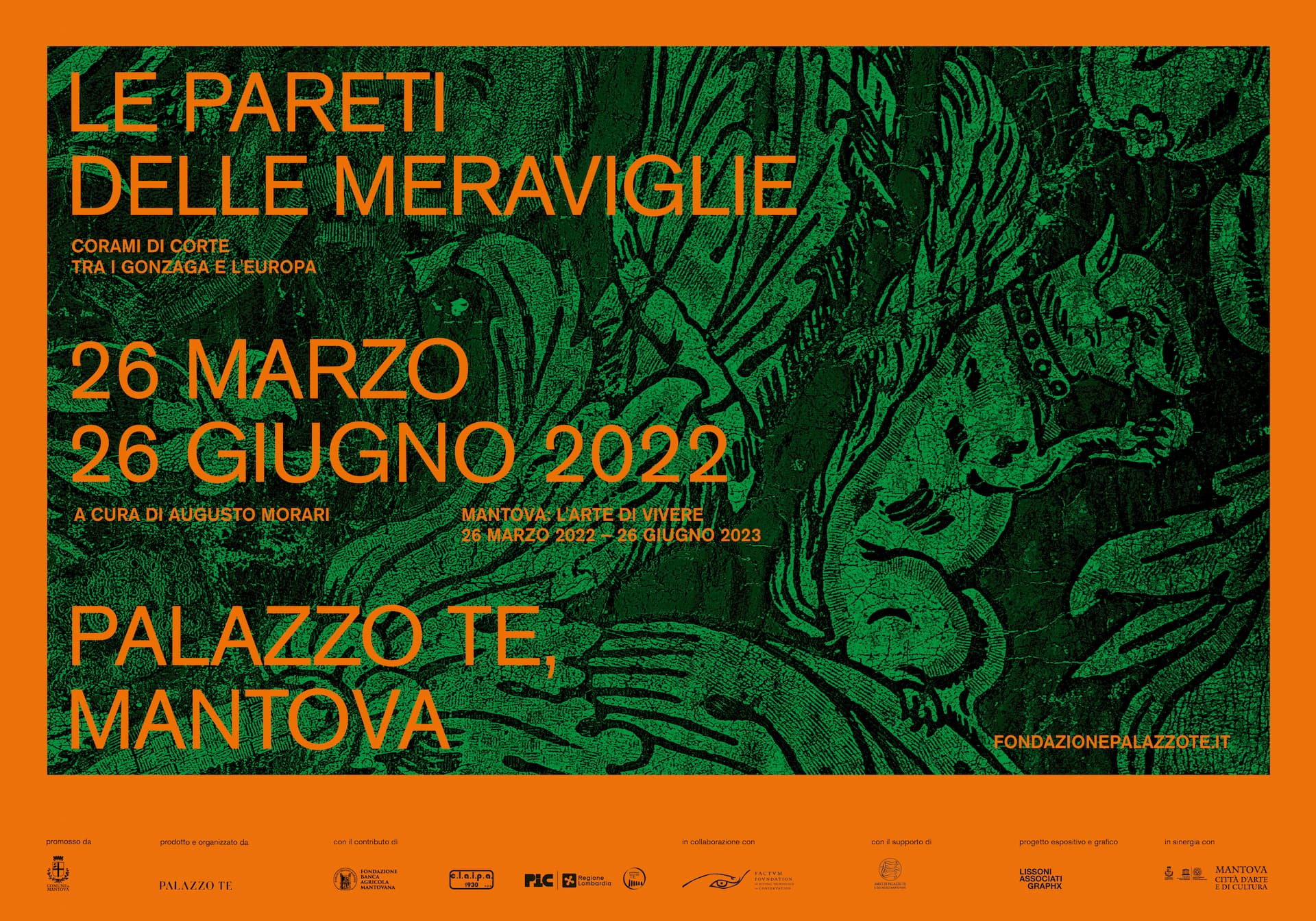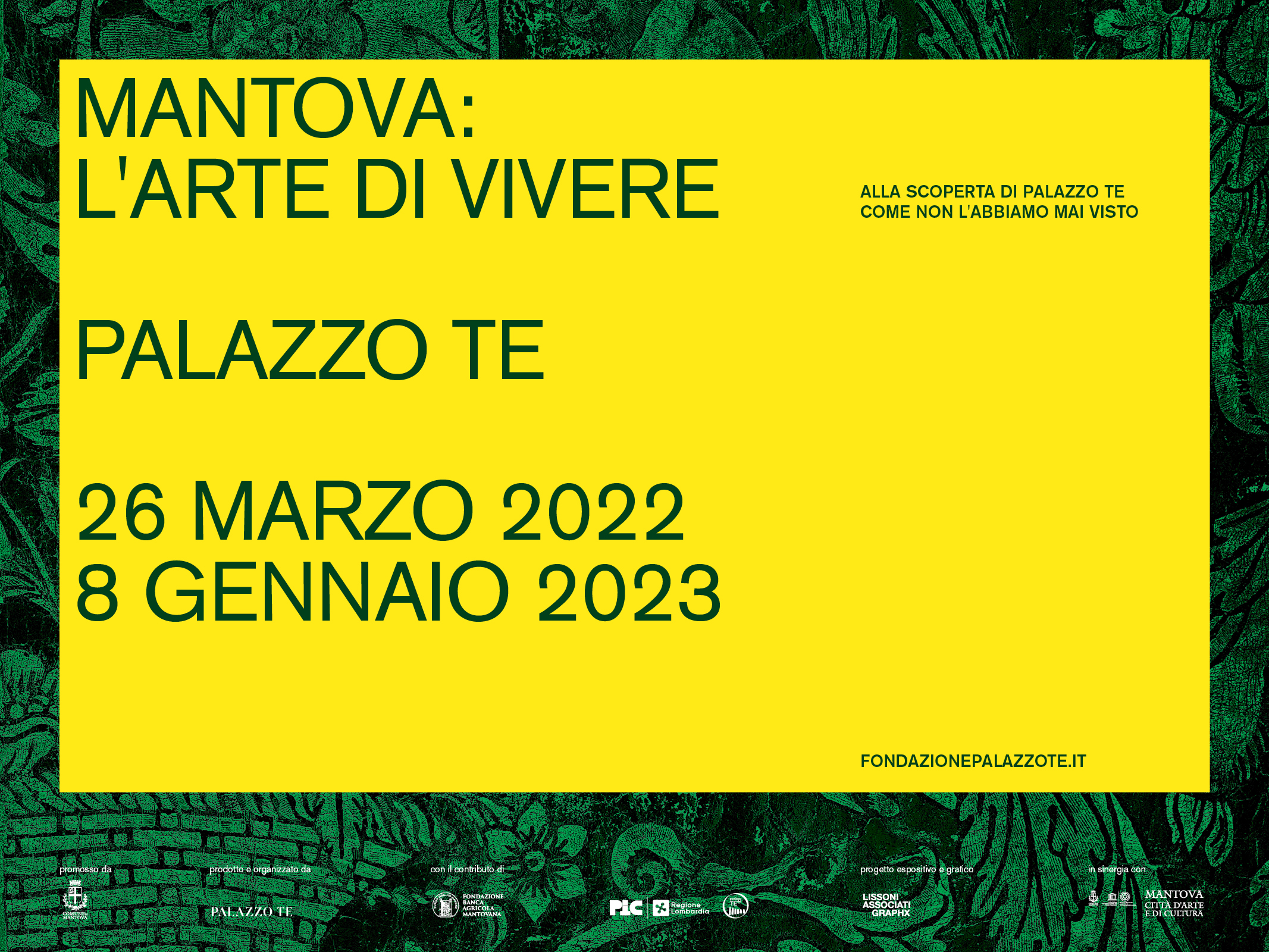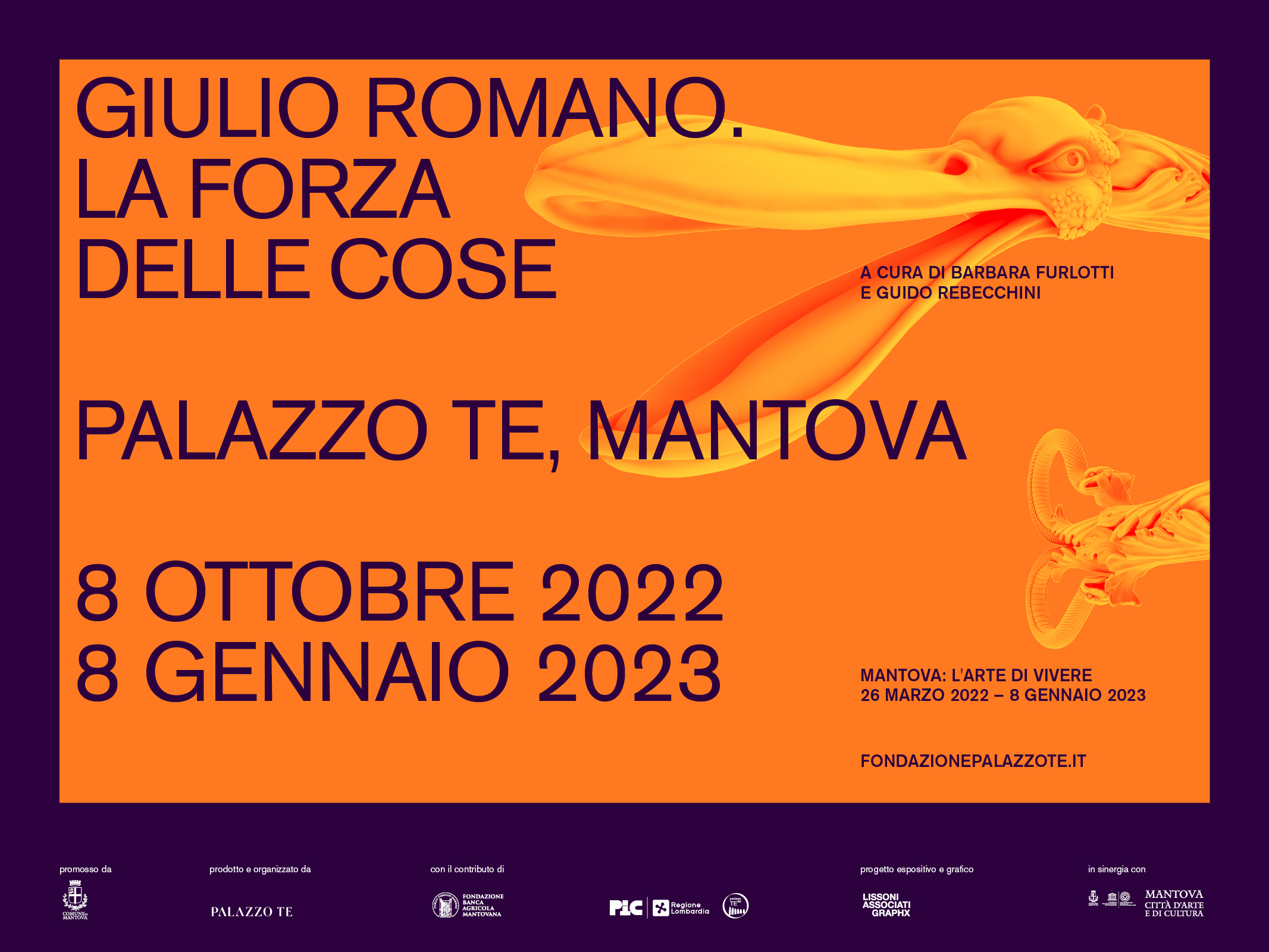
The exhibition Le pareti delle meraviglie. Corami di corte tra i Gonzaga e l’Europa, at Palazzo Te in Mantua from 26 March to 26 June 2022, investigates and rediscovers the exceptional nature of corami: decorated leather wall hangings that adorned the rooms of the most important European courts of the Renaissance, sumptuous expressions of their luxury and grandeur.
Curated by Augusto Morari, the exhibition inaugurates the Palazzo Te Foundation’s 2022 exhibition season “Mantova: l’Arte di vivere”, which explores the “lifestyle” of the Gonzaga court in Renaissance Mantua. With its usual attention to the territory and to the grand themes of the history of art and culture, the annual project is coordinated by director Stefano Baia Curioni with a committee of six members – Barbara Furlotti (The Courtauld Institute), Davide Gasparotto (Getty Museum), Ketty Gottardo (The Courtauld Gallery), Augusto Morari (Palazzo Te Foundation), Guido Rebecchini (The Courtauld Institute) and Xavier Salomon (The Frick Collection) – and offers an extraordinary journey through the sixteenth-century mansion, which reconnects the building and its pictorial decorations to the ephemeral objects and events that it once housed and for which it was originally created.
“Le pareti delle meraviglie, an exhibition that we owe to the inexhaustible passion of Augusto Morari – says director Baia Curioni – is a double opportunity for pleasure: discovering the ancient art of bringing magic to buildings by decorating fantastic walls and seeing Palazzo Te as it once was, imagined at the time of its creation”.
At one time highly fashionable, but now almost completely lost, corami were used for special celebrations and in everyday life, hung on the walls between the upper ornament and the floor, with a dual function: one practical, as insulation, and another more ostentatious, the flaunting of wealth.
The Gonzagas, during their long regency, commissioned and purchased corami of all types and designs from the most renowned leather processing centres – Naples, Rome, Bologna, Ferrara and especially Venice – to decorate their residences, above all Palazzo Te, in an incessant search for the refined, the beautiful, the marvellous.
These sumptuous artifacts were highly perishable and therefore very rare, so the Mantuan exhibition will be a unique event in the world of art exhibitions: a new and surprising journey that enables the public to see Palazzo Te as never before, through the exhibition of a refined selection of about sixty works loaned by prestigious Italian and foreign museums – including the Correr Museum and Palazzo Mocenigo in Venice, Palazzo Madama in Turin, Stibbert and Mozzi Bardini in Florence, the State Archives of Mantua, and the Museumslandschaft Hessen in Kassel – and items from private collections.
Starting from the incredible discovery of a previously unknown sixteenth-century corame returned to the Gonzagas by curator Augusto Morari – the ownership was established and confirmed by the discovery, under the old lining, of stamps of the arms of the Gonzagas – the exhibition is set up in seven sections that retrace the fortune and the fascinating history of these artefacts of the highest technical and aesthetic refinement, and their circulation from the second half of the fifteenth century to the middle of the seventeenth century.
“The exploration of the corami – comments the curator – grew out of two Mantuan testimonies: Francesco Gonzaga’s 1464 letter to his mother, Barbara of Brandenburg, announcing the gift of ‘four spalere (panels) of Cordovan leather to hang on the walls’; and a significant ‘clue’ in Andrea Mantegna’s Camera Picta, where the artist paints a curtain imitating a Hispano-Moorish corame, pregnant with meaning. This detail provides the starting point for the exhibition itinerary, which focuses on the corame that belonged to the House of Gonzaga: an extraordinary piece consisting of leather modules on a blue background with ogival mesh designs, with a Mecca silver-plated pomegranate tree in the centre. I would like to thank the numerous institutions that participated in creating the exhibition through loans of precious works, little known to the public, in some cases restored for this occasion. A heartfelt thanks also to the collectors of Mantua, Florence and Cremona for their generous collaboration”.
Alongside the rich selection of over twenty-five corami and leather artefacts, some now presented to the public for the first time, refined 14th-15th century fabrics with oriental motifs are being exhibited in Palazzo Te’s exhibition spaces. These fabrics testify to the spread of the taste for the exotic and the fashion for new decorative types, characterized by imaginative designs inspired by nature; paintings and drawings inspired by the glittering trend for inflorescences – a major influence on artistic output during the seventeenth century; letters and archival documents testifying to the countless requests and unrestrained acquisitions of the Gonzaga court.
Thanks to the collaboration with the Factum Foundation, the Camera dei Venti is also housing a 3D reworking of the Corame with vases of flowers from the Musée des Arts Decoratifs in Paris: a very high resolution digital representation using the Lucida 3D Scanner (invented and designed by Manuel Franquelo and Factum Art) and composite photography, the life size recreation of the corame has been adapted to the exhibition spaces, as a copy that aims to restore the delicacy of its surface. The refined composition of the work, possibly created by Venetian coramari masters, depicts birds and various flowers, such as tulips, with their petals fanning out, reminiscent of Turkish and Persian culture. The use of recreations and facsimiles to innovate exhibition itineraries, especially when the original object cannot be handled, is at the heart of the Factum Foundation’s contributions to the conservation, study and dissemination of world cultural heritage.
Inside the exhibition spaces, to illustrate and explore the intricate technical procedures initially inherited from the Moors and Arabs of Spain, a master gilder’s workshop (bottega) has been set up, with the materials used for the production and decoration of the wall hangings.
The exhibition is accompanied by a catalogue published by Publi Paolini with essays and information sheets by Augusto Morari, Paola Frattaroli, Andrea Petrucci and Stefano Parolini, and an introduction by Stefano Baia Curioni.
Le pareti delle meraviglie. Corami di corte tra i Gonzaga e l’Europa is sponsored by the City of Mantua, produced and organized by Palazzo Te, with funding from Banca Agricola Mantovana, Claipa and PIC, and with the technical support of Glas Italia and Pilkington – NSG Group, in collaboration with Factum Foundation, with the support of Amici di Palazzo Te and Musei Mantovani, in synergy with Mantua, city of art and culture.
This year the exhibition project was entrusted to Lissoni Associati, while the graphic design has been managed by Lissoni Graphx.
Con il contributo tecnico per le traduzioni di Wall Street English


OPENING TIMES
26.03.2022 – 26.06.2022
DAYLIGHT SAVING TIME
Monday 1 pm – 7.30 pm
Tuesday to Sunday 9 am – 7.30 pm
NORMAL TIME
Monday 1pm – 6.30 pm
Tuesday to Sunday 9 am – 6.30 pm
The ticket office remains open until one hour before closing time.
TICKET OFFICE
T +39 0376/323266
INFO
T 800.714049
THE EXHIBITION PROGRAMME


